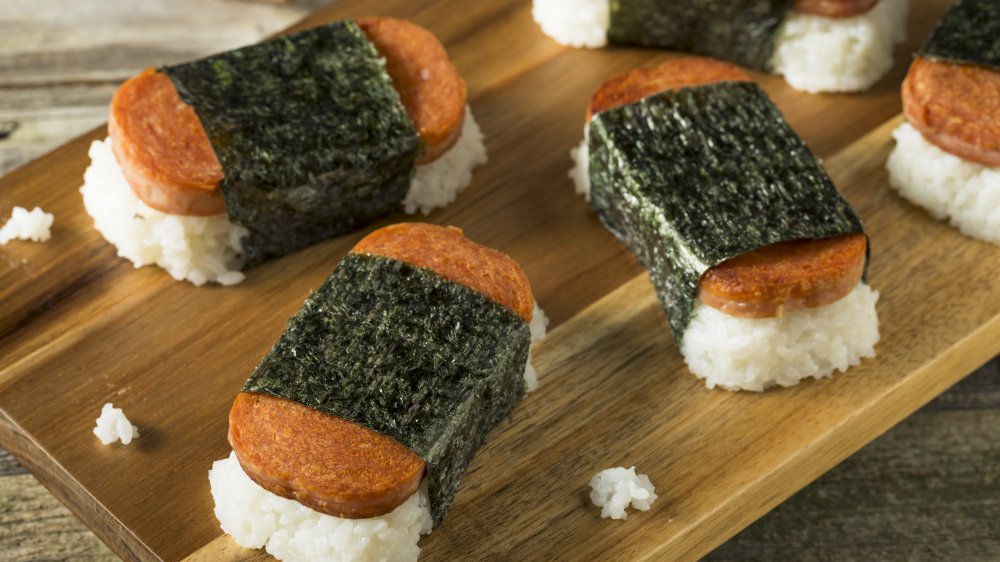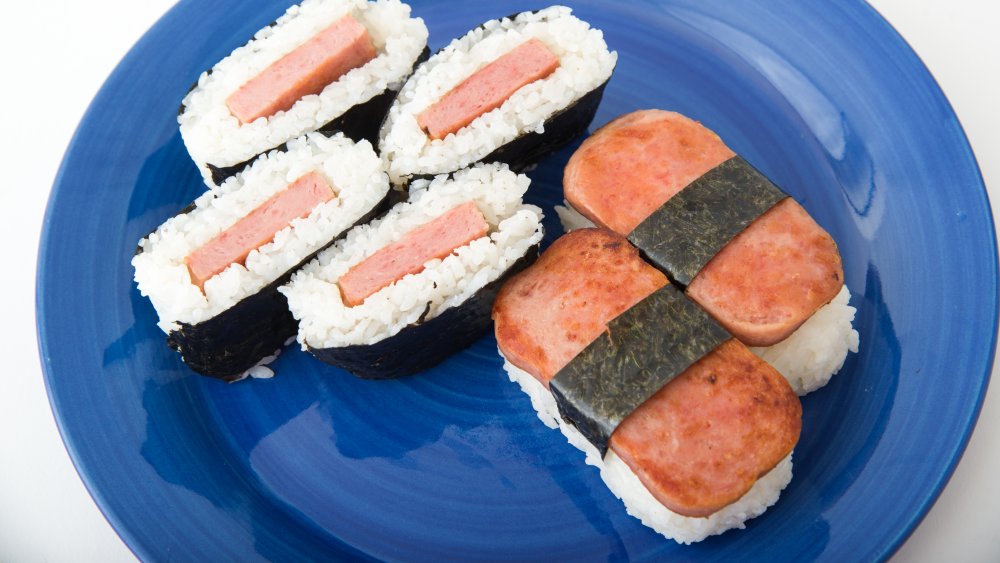The Truth About Spam Musubi
Many of us may have a relationship (or not) with Spam, but no matter how much we might like the mystery meat packed in the rectangular blue can, we'll probably never love it as much as the Hawaiians do. Celebrity chef Mark Noguchi tells Vice that the islanders go through as much as 7 million cans of Spam a year (which is remarkable if you consider that there are only 1.46 million Hawaiians as of 2019, and that translates to a pretty hefty amount of Spam per person).
Spam is its own food group in Hawaii, which explains why it is cut up, sauteed, cooked in shoyu and sugar, and can be found in everything from breakfast eggs to the Hawaiian favorite, spam musubi. The spam, rice, and nori snack can be found everywhere — from gas stations to restaurants. Musubi even has fans in high places — the concoction is said to be a favorite of former President Barack Obama, which is on his "must eat" list whenever he is there (via National Geographic).
Spam musubi was the product of a war surplus
The way The Hawaii Plan tells it, Spam became big on the islands during World War II, when the canned meat was used as an army ration, thanks to its long shelf life. When Spam was made finally available to Hawaiian civilians, it was stuffed into an onigiri, a popular Japanese snack, where rice is packed down and wrapped in nori. A traditional onigiri might be flavored with salmon, pickled plum, and tuna, and seasoned with traditional furikake, or rice seasoning made with dried flavors including roasted sesame seeds, fish flakes, dried wasabi, or even crumbs of salmon (via Japan Centre).
Spam and onigiri appear to go well together because it is so salty (it contains 32 percent of your RDI of sodium, according to Healthline). Musubi can be made with Spam marinated with teriyaki sauce, a block of scrambled egg, or furikake for a snack that can be found at just about any convenience store in Hawaii (via The Hawaii Plan).

